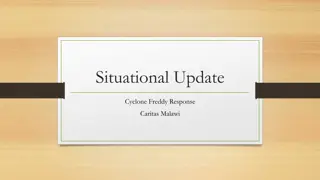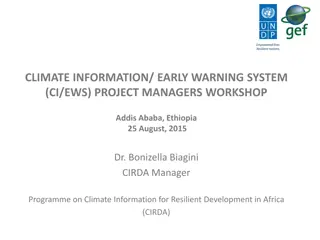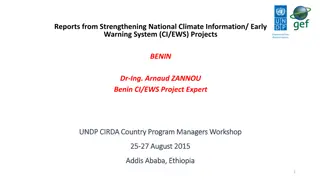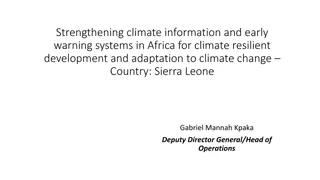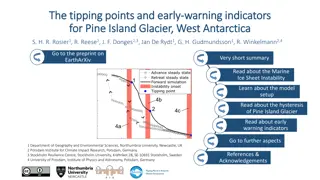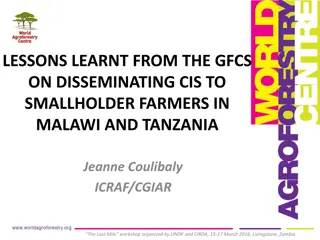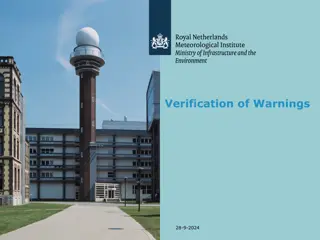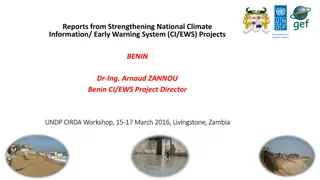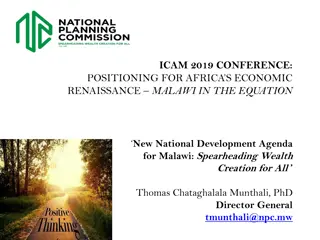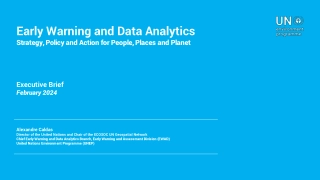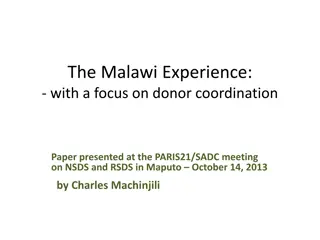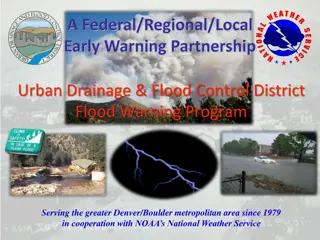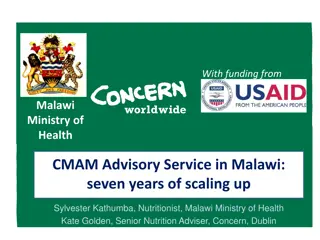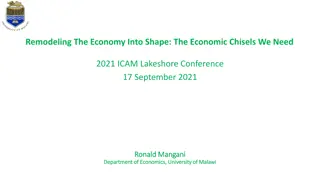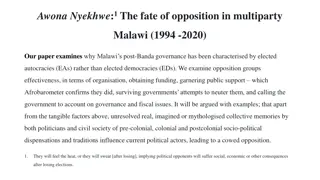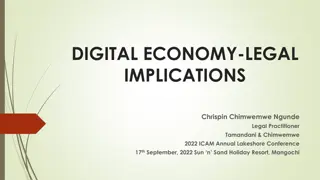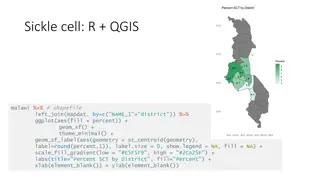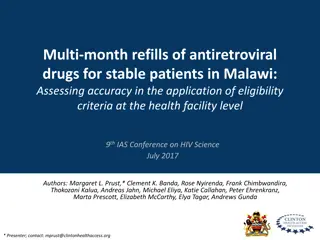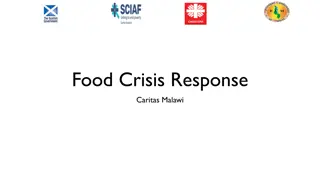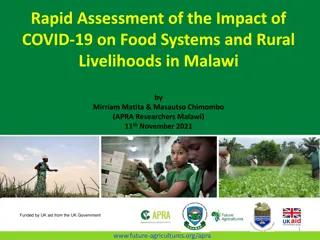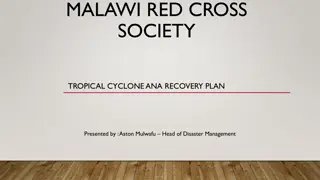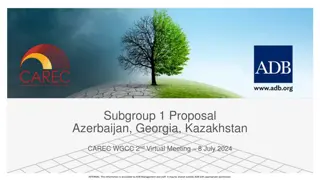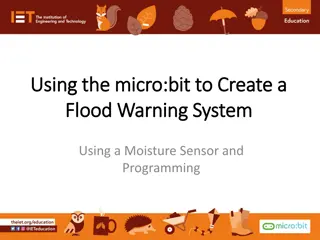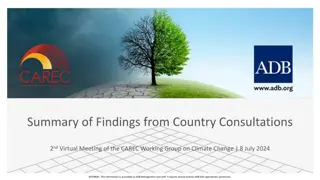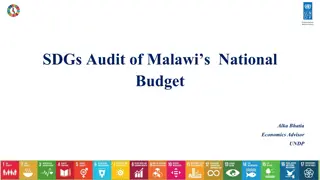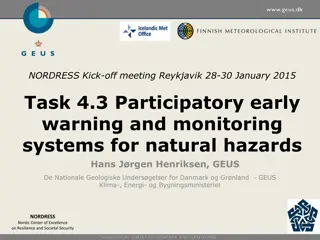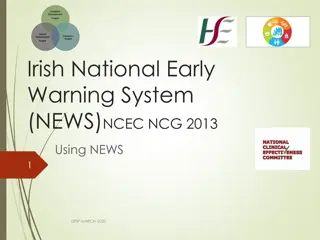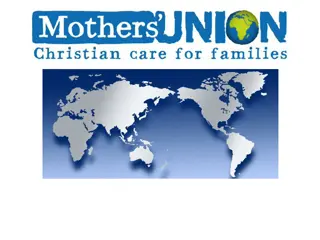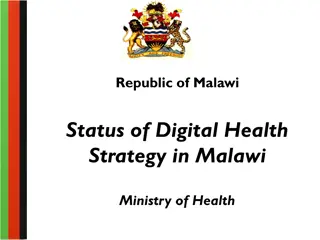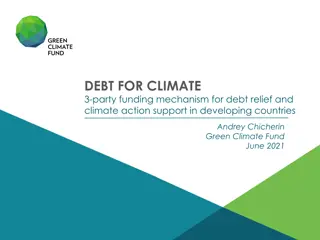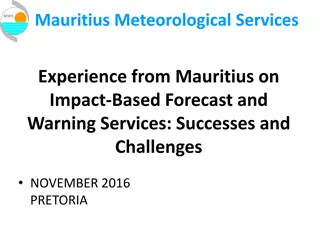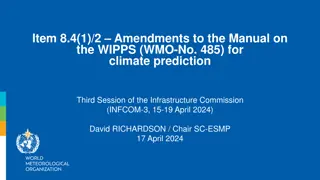Strengthening National Climate Information/Early Warning System Projects in Malawi
This report details the progress and outcomes of the project aimed at enhancing Malawi's capacity in monitoring and forecasting extreme weather, hydrology, and climate change. Key achievements include the procurement and installation of weather and hydrological equipment, capacity building for officers, and facilitating inter-sectoral sharing of weather and climate information. The project focuses on improving early warning systems and long-term development plans through efficient use of environmental information.
Download Presentation

Please find below an Image/Link to download the presentation.
The content on the website is provided AS IS for your information and personal use only. It may not be sold, licensed, or shared on other websites without obtaining consent from the author. Download presentation by click this link. If you encounter any issues during the download, it is possible that the publisher has removed the file from their server.
E N D
Presentation Transcript
Strengthening National Climate Information/ Early Warning System (CI/EWS) Projects Country Report for Malawi to the UNDP CIRDA Country Program Managers Workshop 15thto 17thMarch, 2015 Livingstone, Zambia
Project Specific Outcomes Enhanced capacity of the Department of Climate Change and Meteorological Services (DCCMS) and Department of Water Resources (DWR) to monitor and forecast extreme weather, hydrology and climate change. Efficient and effective use of hydro-meteorological and environmental information for making early warnings and long-term development plans.
Implementing Partners Department of Disaster Management Affairs (Coordinator) Department of Climate Change and Meteorological Services Department of Water Resources
Progress Made under the Project 10 automatic weather stations procured and installed in key areas in the country 15 automated hydrological equipment have been procured-Installation awaiting construction of data collection platform houses Data digitization done for 66 rainfall stations and subsidiary stations
Progress Made Under the Project Procurement of various meteorological equipment which has been installed in various stations such as Stevenson screens, solar panels, batteries, DCCMS has upgraded and updated its database and information management system through an expert from Kenya Meteorological Department Facilitate inter-sectoral sharing of weather and climate through enhanced district climate information centers
Progress Made under the Project Capacity Built for various officers: 1 officer completed advanced diploma in Electrical Engineering Four officers from DCCMS are undergoing a two year Advanced Meteorological Forecasting Course (WMO CLASS II) at Institute of Meteorological Training and Research in Nairobi Kenya One Officer undergoing Post Graduate Diploma in Operational Hydrology In Nairobi, Kenya Training of community members on climate information interpretation and use Tailor made trainings eg. Three engineers underwent a weather observation networks factory training Campbell Scientific Factory in Cape Town, South Africa
National Plans for Communicating with End Users 1. Have developed a climate information dissemination mobile platform called 321 in partnership with Human Network International Users access free weather information Can choose to be reveing weather information through sms s Working with HDI to advance the platform so that we use of disseminating specific warning alerts 2. Using social media: Facebook; Malawi Weather, Whatsapp group; Weather Watchers Malawi 3. Working with district officers and extension workers to bring climate information across to communities 4. Using print media, electronic media to disseminate climate information through among others, issuing short term and medium term weather bulletins and warning alerts
National Plans for Communicating with End Users 5. Weather EW messages dissemination by private radio stations Using community based early warning where the communities are responsible for generating and disseminating EW information Undertook a comprehensive assessment of existing centralized and decentralized early warning systems. Inadequate monitoring and warning services Limited modes of communicating climate information NGOs and 6. systems 7.
Further Plans for Communication with End Users Conduct user need assessments for supporting production and dissemination of weather and climate information and warnings. Produce tailored information for various institution and communities Procurement of lightening detector systems will be done this year
One of the AWS installed in Ntcheu district


